Lea Wait's Blog, page 92
April 7, 2022
An Alligator Hide over a Baby-Soft Soul
Kate Flora: I’ve been sitting in the writer’s chair now for almost thirty-nine years, ten of them spent in the grueling sadness of the unpublished writer’s corner. I’ve been up, as in, “Oh my gosh, my agent just got me a three-book hard/soft deal.” I’ve been down, way down, after being dropped by a terse e-mail from my editor (yes, seriously) six books into writing a series I loved. I’ve been way up when a book went to auction, got a six figure advance, and became a book club selection. I’ve been way down when the sales figures for an award-winning book didn’t earn out the tiny advance I was paid. There are some interesting lessons I’ve taken away from all of this.
them spent in the grueling sadness of the unpublished writer’s corner. I’ve been up, as in, “Oh my gosh, my agent just got me a three-book hard/soft deal.” I’ve been down, way down, after being dropped by a terse e-mail from my editor (yes, seriously) six books into writing a series I loved. I’ve been way up when a book went to auction, got a six figure advance, and became a book club selection. I’ve been way down when the sales figures for an award-winning book didn’t earn out the tiny advance I was paid. There are some interesting lessons I’ve taken away from all of this.
First, and something I always share with my writing students, is that a writer has to believe in her own work and affirmatively own her right to call herself a writer. The world of publishing, and the task of getting published, can be brutal. Often, the message from the universe is that your work sucks and you suck and anything you can think of has already been done, and better by someone else. Give it up, dreamer, you should go do something else. In order to get through the harsh message days, the days of silence when your book is out for consideration, or the words “no thanks” scribbled in pencil next to a coffee stain on your manuscript, to stay in the chair being the creative storyteller you are, a writer has to believe that she’s entitled to write, that her writing has value. She has to have faith that the writing will improve. She has to love the process more than the notion of “being published.” And she has to work assiduously to become the best possible writer she can be so that it gets harder and harder to reject her.
This does not mean stubborn adherence to the idea that the work is always great. We all have a lot to learn from our beta readers and from our editors. A great editor (or editorial agent) can make a writer better and a story stronger. If readers aren’t getting your character or your story, it’s important to listen to that and to figure out why.
The beauty of this business is that the learning never ends.
 I’ve learned (after I picked myself up off the floor and wiped my eyes) that sometimes being dropped can be the best thing that can happen, because it made me take chances. If my Thea Kozak series hadn’t been dropped (it was subsequently picked up by another publisher) I wouldn’t have started taking chances. Those chances led me to writing my Portland, Maine-based Joe Burgess police procedural series. Taking chances meant joining Susan Oleksiw and Skye Alexander in forming Level Best Books, and the amazing satisfaction of publishing crime story collections (including two Edgar nominees) and putting many first-time authors in print.
I’ve learned (after I picked myself up off the floor and wiped my eyes) that sometimes being dropped can be the best thing that can happen, because it made me take chances. If my Thea Kozak series hadn’t been dropped (it was subsequently picked up by another publisher) I wouldn’t have started taking chances. Those chances led me to writing my Portland, Maine-based Joe Burgess police procedural series. Taking chances meant joining Susan Oleksiw and Skye Alexander in forming Level Best Books, and the amazing satisfaction of publishing crime story collections (including two Edgar nominees) and putting many first-time authors in print.
If I hadn’t decided not to let someone else decide whether I was a writer, I might have gone back to practicing law. Instead, I’ve collaborated on true crime and other nonfiction projects that let me use my legal training and my writing skills while also letting me help others put wings on their dreams.
Along the way, I’m trying to pay forward in appreciation of the generosity I was given by
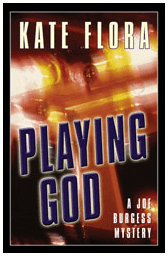
The Joe Burgess series begins with Playing God
my Sisters in Crime and other writers when I was starting out. When I knew nothing about promotion, my sisters were there, teaching me how to do an effective public presentation (inviting, whereas the law can be adversarial) and how to be a good citizen on a panel. In particular, the amazing B.A. Shapiro taught me how to be a good citizen on a panel, and mentor the writers coming after me. I’ve mentored dozens of writers, tried to help them stay strong when the messages from the world were unkind, and celebrated when they sold books.
I’ve learned that it’s hard, but we shouldn’t give up. We should be survivors. If they vote us off the island, we have to just swim back. Inside, most of us are tender, baby-soft souls. Solitary, curious observers who take what the world gives us and weave it into story. We wonder what makes the people around us who they are, what shapes them, and what makes them deviate from the social compact so that they allow themselves to commit crimes. To do that, and survive in the world of publishing outside ourselves, we often need to don our alligator-hide cloaks, and to be reminded, as Sisters in Crime tells us: You write alone but you’re not alone.
A former assistant attorney general for the State of Maine in the areas of child abuse and child support enforcement, Kate is a founding member of the New England Crime Bake and Maine Crime Wave conferences. She has served as editor and publisher of Level Best Books and as international president of Sisters in Crime.
April 5, 2022
Who Loves Ya Baby?
John Clark with his retired librarian hat on today. The following comment was posted on the Maine library listserv a week back in response to a job posting for a part-time masters level library position. I share it as a start for this column. Why do we value such competent people so little?
“It’s beyond sad that here in Maine libraries are only able to offer $18-20 an hour for a position that requires a master’s level degree and that level of skill. The same candidate could make $20 an hour at Marden’s and also receive a sign-on bonus. I don’t know what, specifically, can be done but I strongly believe that the salary levels at libraries are historically suppressed by the fact that it is traditionally a female-dominated field. When I presented those ideas to our city manager and attempted to show how the requirements listed in our job descriptions exceed those for many city positions that pay much better, he was aghast at the concept that librarians should be compared to non-librarians for pay purposes. If we are ever to be paid more appropriately, I think that is the direction in which we must go.”
Maine is fortunate to have the library system we do. For a rural state where many towns are barely getting by, Maine libraries do so many things and offer so much. I say this as much from the user standpoint as from having been a Maine librarian for over twenty years. Thanks to creativity and persistence, we have MaineCat, the statewide system that allows patrons in a large number of libraries to find and reserve books, movies, and music online. Those are delivered to most Maine libraries at no cost through the statewide van delivery service. When I was the librarian in Hartland, a one person operation, we lent and borrowed over 3,000 items annually. If we had to pay postage for the ones we lent, that would have run us in excess of $6,000 per year, more than our entire materials budget.
Then, we have the online databases on the Maine State Library, that are available to all Maine citizens at no cost. https://library.digitalmaine.org/ On that same page, you will find information about Learning Express, and the Digital Download library. In the event your local library isn’t a participating member of the latter, ANY Maine citizen can get a free library card at the Maine State Library, and I believe Bangor and Portland Public also offer them as well.
These resources are just the tip of the iceberg. Public libraries exist to serve, and do so in more and better ways than almost any other social/government entity in the world. Most librarians are in the profession because they enjoy people and the challenge of finding the information people want, often when the patron isn’t sure what they’re after. I call it interactive reference. Someone comes into the library and asks, “Do you have medical books?” The easy response is “yes, we do.” But that’s not the correct one. Most librarians would engage the other person in a conversation, attempting to get at their real need. I had such a conversation in Hartland and what the parson really needed was information about the kind of cancer their mother had just been diagnosed with. I was able to provide a couple articles and a reliable website for them, a far more reassuring and comprehensive answer.
Libraries offer programs for all ages and got creative during the pandemic with zoom. Many sponsor book discussion groups, and thanks to the van service, can borrow multiple copies of the same title so participants don’t have to buy copies. Most libraries are happy to order new books for patrons as well.
We are happy patrons of the Waterville Public Library where kits are frequently available, particularly for kids. Beth and I spent part of last Saturday making paper bag kits with Reid and Piper, courtesy of WPL.

Piper testing her kite
The range of items one can borrow from a library might surprise you. Depending upon the library, it includes, skates, telescopes, fishing equipment, and here in Waterville, pruning poles to cut down Browntail Moth nests from trees. https://www.watervillelibrary.org/news/article.php?id=790
Another brand new feature offered by Maine libraries is access to 20,000 comics, graphic novels and Manga through ComicsPlus https://www.watervillelibrary.org/news/article.php?id=772
Still another which just got updated is this: Welcome to the Maine Business, Science & Technology Library (MBSTL). https://libguides.library.umaine.edu/mbstl
Perhaps my favorite thing Maine libraries do is have book sales. These were severely curtailed during the pandemic, but are coming back. I particularly enjoy going to ones in Belgrade, Dover-Foxcroft, Eastport, and Lubec.
What do you like best about your local public library?
April 3, 2022
Maine Crime Writers and Libraries

Kate Flora, behind the amazing podium at the Portland Public Library
In honor of Library week, here are some photos from various libraries we’ve visited over the years. It’s always a thrill to talk to readers, and where better to find them than in a local library?

Jen Blood, Kathy Emerson/Kaitlyn Dunnett, and Lea Wait at the New Gloucester library in 2016

Kate Flora, Kathy/Kaitlyn, Lea, and Julia Spencer-Fleming at Wells Library in 2006

Lea, Kate, and Kathy/Kaitlyn at the New England Library Association conferece in 2013

Kathy (pre Kaitlyn) at the Clifton Park library in NY state in 2004. I followed Tess Gerritsemn in that year’s lineup
Don’t you love how the hairstyles change?

With Bruce Coffin & Anne & Paula from Mainely Murders @ Kennebunk library
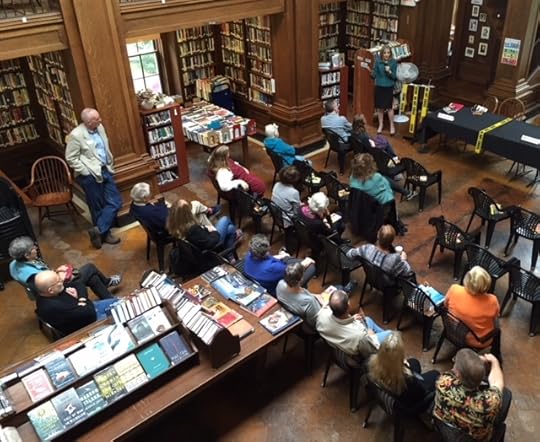
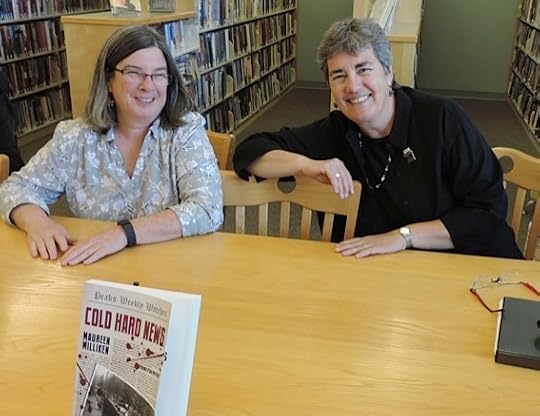
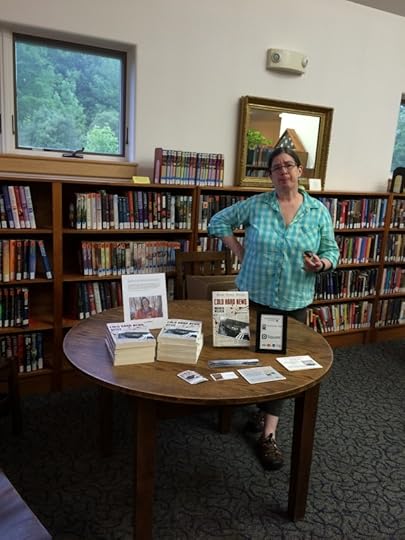
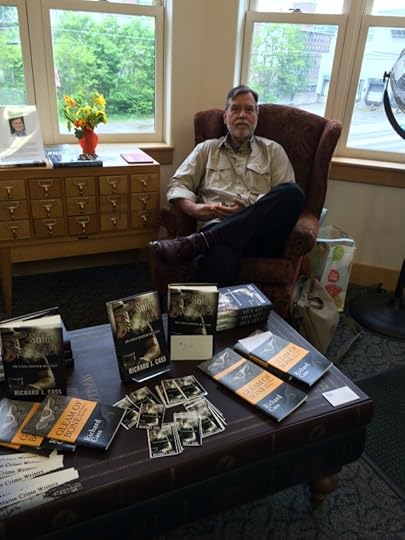

Maine authors day at Guilford Library

Bath library sponsored mystery writers at the Farmer’s Market

Kate Flora, Barbara Ross and Brenda Buchanan at Curtis Memorial Library in Brunswick

Brenda Buchanan at Winter Harbor Public Library

Kate and Roger at the Pittsfield Public Library
April 1, 2022
Weekend Update: April 2-3, 2022
 Next week at Maine Crime Writers there will be a group post for Library Week on Monday and posts by John Clark (Tuesday), Kate Flora (Thursday) and Brenda Buchanan (Friday).
Next week at Maine Crime Writers there will be a group post for Library Week on Monday and posts by John Clark (Tuesday), Kate Flora (Thursday) and Brenda Buchanan (Friday).
In the news department, here’s what’s happening with some of us who blog regularly at Maine Crime Writers:
An invitation to readers of this blog: Do you have news relating to Maine, Crime, or Writing? We’d love to hear from you. Just comment below to share.
And a reminder: If your library, school, or organization is looking for a speaker, we are often available to talk about the writing process, research, where we get our ideas, and other mysteries of the business. We also do programs on Zoom. Contact Kate Flora
March 31, 2022
Remembering Childhood Favorites
Kaitlyn Dunnett/Kathy Lynn Emerson here, today waxing nostalgic about some of the books that were influential in my early years as a reader. Like the writing I’ve done as an adult, it’s a mixed bag.
Starting at the earliest, I remember my father reading to me from a copy of Grimm’s Fairy Tales. Looking back, I can only say that the idea of reading scary stories to kids at bedtime is right up there with teaching them to recite a prayer that includes the words “if I should die before I wake.” I mean, think about that for a minute!

I also read comic books
My overactive imagination having survived until I could read for myself, I devoured books. I still have some of the Little Golden Books I was given, and I loved my heavily illustrated oversize copy of Disney’s Peter Pan. It will come as no surprise that I was an early collector of girls’ mystery series, and not just the Nancy Drews, either. My two favorites among the girl sleuths were Beverly Gray (I still have those) and Judy Bolton.
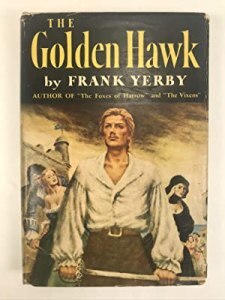 At the same time, or perhaps a bit earlier, I was also reading juvenile biographies—very sanitized for young readers but accurate enough to awaken a lifelong interest in women’s history. The subjects that interested me were as varied as Jenny Lind, Clara Barton, Nellie Bly, and Elizabeth the First. Nellie Bly was the subject of my fourth published book. Later I dipped into the many volumes of Readers’ Digest Condensed Books that lived on a shelf in our stairwell (I remember reading what must have been Margaret Irwin’s Young Bess in that format) and by the time I was in my teens I was borrowing my father’s historical novels—books by Margaret Campbell Barnes, Frank Yerby, and Thomas B. Costain that featured lots of adventure along with the history. The sixteenth-century fascinated me early on and still does.
At the same time, or perhaps a bit earlier, I was also reading juvenile biographies—very sanitized for young readers but accurate enough to awaken a lifelong interest in women’s history. The subjects that interested me were as varied as Jenny Lind, Clara Barton, Nellie Bly, and Elizabeth the First. Nellie Bly was the subject of my fourth published book. Later I dipped into the many volumes of Readers’ Digest Condensed Books that lived on a shelf in our stairwell (I remember reading what must have been Margaret Irwin’s Young Bess in that format) and by the time I was in my teens I was borrowing my father’s historical novels—books by Margaret Campbell Barnes, Frank Yerby, and Thomas B. Costain that featured lots of adventure along with the history. The sixteenth-century fascinated me early on and still does.
 In among the books mentioned above were several others that stand out in my memory—not books I kept, but books that nevertheless made a deep impression on me. There was Edgar Eager’s Half Magic, for example, which defies easy description. And Little Maid of Old New York by Alice Turner Curtis, which takes place in the part of the world I lived in as a child. I may have sent her a fan letter. I say may because until I started Googling, I was sure it was Alice Curtis Desmond, who lived not far from me, to whom I wrote. I remember receiving a reply, but it has long since disappeared. It’s also possible that my correspondence was with neither of them, but instead with Anne Terry White. I was younger than ten at the time—that’s over sixty years ago, so it’s no wonder my memory is a little hazy. White’s book, Lost Worlds: The Romance of Archaeology, definitely made an impression on me. Unlike the edition shown here, my copy had a bright pink cover. I remember sitting on my porch steps with a neighbor, a boy I’d been friends with for ages (we’d earlier founded the Mighty Mouse Fan Club with his cousin Cheryl) and planning our future as archaeologists. That was before I realized how hard the work is, and that it involves copious sweating, but my love of reading about archaeologists, real and fictional, continues to this day.
In among the books mentioned above were several others that stand out in my memory—not books I kept, but books that nevertheless made a deep impression on me. There was Edgar Eager’s Half Magic, for example, which defies easy description. And Little Maid of Old New York by Alice Turner Curtis, which takes place in the part of the world I lived in as a child. I may have sent her a fan letter. I say may because until I started Googling, I was sure it was Alice Curtis Desmond, who lived not far from me, to whom I wrote. I remember receiving a reply, but it has long since disappeared. It’s also possible that my correspondence was with neither of them, but instead with Anne Terry White. I was younger than ten at the time—that’s over sixty years ago, so it’s no wonder my memory is a little hazy. White’s book, Lost Worlds: The Romance of Archaeology, definitely made an impression on me. Unlike the edition shown here, my copy had a bright pink cover. I remember sitting on my porch steps with a neighbor, a boy I’d been friends with for ages (we’d earlier founded the Mighty Mouse Fan Club with his cousin Cheryl) and planning our future as archaeologists. That was before I realized how hard the work is, and that it involves copious sweating, but my love of reading about archaeologists, real and fictional, continues to this day.
What about you, dear readers? Do you still remember books that made an impression on you when you were a child? I’d love to hear from you in the comments if you do.

Kathy Lynn Emerson/Kaitlyn Dunnett has had sixty-four books traditionally published and has self published others, including several children’s books. She won the Agatha Award and was an Anthony and Macavity finalist for best mystery nonfiction of 2008 for How to Write Killer Historical Mysteries and was an Agatha Award finalist in 2015 in the best mystery short story category. She was the Malice Domestic Guest of Honor in 2014. Her most recent publications are The Valentine Veilleux Mysteries (a collection of three short stories and a novella, written as Kaitlyn) and I Kill People for a Living: A Collection of Essays by a Writer of Cozy Mysteries (written as Kathy). She maintains websites at www.KaitlynDunnett.com and www.KathyLynnEmerson.com. A third, at A Who’s Who of Tudor Women, is the gateway to over 2300 mini-biographies of sixteenth-century Englishwomen.
Sharing Books We’ve Read and Loved
From time to time, instead of talking about our writing, our books, or our Maine lives, we like to talk about books-other people’s books. That’s our group post theme for today: a book we’ve read and loved. Feel free to chime in with books you’ve loved.
Kate Flora: I was at an outdoor solstice party back in December, under an open tent in the rain, when I heard someone in another conversation mention This is Happiness by Niall Williams. I had to join that conversation to hear that reader’s thoughts, because it is my favorite book of the last year. A lot of the time I read mysteries, or I read nonfiction, especially natural history, forensics, or gardening and cook books. This book, handed to me by a friend who accidentally bought two copies, is a quiet book. A coming of age story in Ireland in the 1950’s, when electricity is just coming to a small town. The narrator lives with his grandparents and simply tells the story of himself, his family, his first love, and his country town. What makes the book stand out is the writing. Not splashy or overwrought but sentence-by-sentence lovely. Writing that makes you sigh, again quietly, and think “I wish I could write like that.” Not violent. Not dramatic. Just beautifully pleasing. It leaves you with a gentle sense of pleasure and having been well entertained.
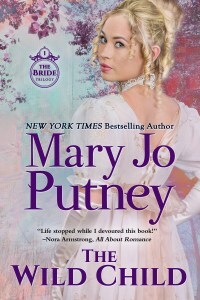 Kaitlyn Dunnett/Kathy Lynn Emerson: My problem is that I’ve loved too many books in too many genres to pick just one as either a “favorite” or an influence. To make matters worse, in these waning (I hope) days of Covid, I’ve been rereading many old favorite series, as in series with lots of books in them. I’ve reread all of J. D. Robb’s In Death books (54, I think, including the most recent). I went back and read Mary Jo Putney’s Regency “Fallen Angels” romance series (7 books) and then realized that her Bride trilogy revisits some of the characters from the earlier books. It had been about 20 years since the last time I read any of those titles. One of the the Bride books, The Wild Child, has several harrowing scenes in a madhouse of the period, where uppity women not infrequently found themselves confined for being troublesome to their families. That made me remember a novel I read back in the 1990s, another historical romance, this one concerning a nobleman who had a stroke and was deemed mad when he could no longer speak or move his right hand. He’s rescued from a madhouse by a Quaker woman who’s there as a nurse. It took me a while to remember the title and author, but I finally did and I’m now happily rereading Laura Kinsale’s Flowers from the Storm. It’s just as compelling a read as I remembered. I’d highly recommend any of the above titles. Great escapism, but also very well-written novels.
Kaitlyn Dunnett/Kathy Lynn Emerson: My problem is that I’ve loved too many books in too many genres to pick just one as either a “favorite” or an influence. To make matters worse, in these waning (I hope) days of Covid, I’ve been rereading many old favorite series, as in series with lots of books in them. I’ve reread all of J. D. Robb’s In Death books (54, I think, including the most recent). I went back and read Mary Jo Putney’s Regency “Fallen Angels” romance series (7 books) and then realized that her Bride trilogy revisits some of the characters from the earlier books. It had been about 20 years since the last time I read any of those titles. One of the the Bride books, The Wild Child, has several harrowing scenes in a madhouse of the period, where uppity women not infrequently found themselves confined for being troublesome to their families. That made me remember a novel I read back in the 1990s, another historical romance, this one concerning a nobleman who had a stroke and was deemed mad when he could no longer speak or move his right hand. He’s rescued from a madhouse by a Quaker woman who’s there as a nurse. It took me a while to remember the title and author, but I finally did and I’m now happily rereading Laura Kinsale’s Flowers from the Storm. It’s just as compelling a read as I remembered. I’d highly recommend any of the above titles. Great escapism, but also very well-written novels.
Susan Vaughan: A favorite book of recent memory is Ariana Franklin’s Mistress of the Art of 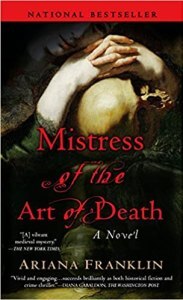 Death. As one reviewer on Amazon put it, “12th century medical forensics…what could be cooler?” Dr. Vesuvia Adelia Rachel Ortese Aguilar, a forensics expert educated in Salerno, is hired by King Henry II of England to solve the (gruesome) murders of Christian children in the small town of Cambridge. He wants the suspects freed, prominent Jews who pay him taxes. Adelia examines the bodies and becomes involved with the community while assembling her own suspect list. The writing beautifully blends the times and characters with the taut plot. Plot twists and a bit of romance and humor add to the brew. I’ve read the second book and am eager to begin book three. Alas, Franklin passed away before completing book five, but her daughter finished it for her. Highly recommended.
Death. As one reviewer on Amazon put it, “12th century medical forensics…what could be cooler?” Dr. Vesuvia Adelia Rachel Ortese Aguilar, a forensics expert educated in Salerno, is hired by King Henry II of England to solve the (gruesome) murders of Christian children in the small town of Cambridge. He wants the suspects freed, prominent Jews who pay him taxes. Adelia examines the bodies and becomes involved with the community while assembling her own suspect list. The writing beautifully blends the times and characters with the taut plot. Plot twists and a bit of romance and humor add to the brew. I’ve read the second book and am eager to begin book three. Alas, Franklin passed away before completing book five, but her daughter finished it for her. Highly recommended.
John Clark: Ya want one book?!? That’d be like eating one chip, or M&M. Still, I’ve read three dandy YA books recently, two of which would be perfect for using in a high school course called ‘Teaching History Through Young Adult Fiction.’ Mirror Girls and You Truly Assumed address racism and Islamophobia in ways teens affected by both issues can strongly relate to, and Blood Scion, while dark fantasy, made me realize how horrific an experience being a child soldier in Africa, or eastern Europe must be.
Maggie Robinson: When we travel to the UK, we love watching the game shows in the late afternoon. They are wildly different from what you’d see on American TV, have much, much smaller prizes and much, much more general weirdness. Very little glitz, and a whole lot of geekiness. 
A favorite program has been Pointless (a great name for almost anything nowadays), and one of the presenters, Richard Osman, has written a mystery series set in a posh retirement community in the English countryside. The four protagonists led very interesting lives in the past, and are keen to continue to keep their minds sharp. 
I rarely “cast” a book as I’m reading, but I kept seeing Helen Mirren, Judy Dench (or maybe Celia Imrie), Albert Finney, and Ben Kingsley in the main roles.
To my delight, The Thursday Murder Club, is going to be a movie, but even though the lead characters are supposed to be in their seventies, younger actors will be hired so they don’t die off before the franchise is shot!!! So, no Dame Helen, I guess, although I hope she lives forever.
The second book, The Man Who Died Twice, was an even better read, and a third, The Bullet That Missed, comes out this fall. Can’t wait!
Dick Cass: Not sure anyone wants to relive 2020 into 2021 at this point, but Charles Finch’s What Just Happened struck  a major chord with me. It’s essentially a diary of his experiences during the year and muses very intelligently on everything that happened: COVID-19, the weak Presidential responses to seemingly every crisis, the protests for racial justice, and the Presidential election. Not a murder mystery, but certainly contains characters you might want to murder . . (Finch’s grandmother was Anne Truitt, whose Daybook is a particular inspiration for me.)
a major chord with me. It’s essentially a diary of his experiences during the year and muses very intelligently on everything that happened: COVID-19, the weak Presidential responses to seemingly every crisis, the protests for racial justice, and the Presidential election. Not a murder mystery, but certainly contains characters you might want to murder . . (Finch’s grandmother was Anne Truitt, whose Daybook is a particular inspiration for me.)
Maureen Milliken: I read Liane Moriarty’s Apples Never Fall, 472 pages in the hardcover version, in 24 hours a few months ago. While she sometimes is dismissed as 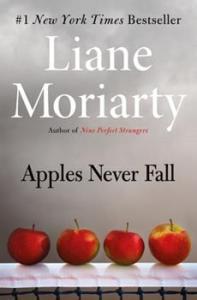 “chick lit,” her books are deceptively well-written. By “deceptively,” I mean that they may seem light to those who dismiss family drama and women’s point of view, but they are incredibly layered. Apples Never Fall is the closest to a perfect book I’ve read in a long time — in narrative construction, character development, writing style — everything. One thing I like about Moriarty’s books is she writes characters readers can like, and never pulls the lousy trick of taking a character we’ve grown to like and pulling the rug out from under us by having them do something unforgiveable. She also has the rare ability to switch between character voices in a way that makes the reader see every character with empathy, even ones viewed by others in the book as annoying or jerks. The whole time I was reading it, I kept telling myself I should be working on my own book.l I rationalized it that I was learning from her. Who am I kidding? She does it so seemlessly, I”m lost in the story and forget to look at what she’s doing.
“chick lit,” her books are deceptively well-written. By “deceptively,” I mean that they may seem light to those who dismiss family drama and women’s point of view, but they are incredibly layered. Apples Never Fall is the closest to a perfect book I’ve read in a long time — in narrative construction, character development, writing style — everything. One thing I like about Moriarty’s books is she writes characters readers can like, and never pulls the lousy trick of taking a character we’ve grown to like and pulling the rug out from under us by having them do something unforgiveable. She also has the rare ability to switch between character voices in a way that makes the reader see every character with empathy, even ones viewed by others in the book as annoying or jerks. The whole time I was reading it, I kept telling myself I should be working on my own book.l I rationalized it that I was learning from her. Who am I kidding? She does it so seemlessly, I”m lost in the story and forget to look at what she’s doing.
Currently I’m reading Kate Atkinson’s Big Sky. I bought it in hardcover when it came out 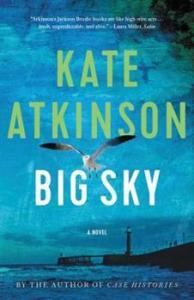 three years ago as a treat to read when I’ve finished the book I’m still working on. I finally broke down a few days ago and picked it up to read. I’m not finished with my book (don’t ask me how far along I am or how much I have left to go, that’s not an aswerable question), but I figure I can learn from her, too. Ha ha. Big Sky is a long-awaited sequel to her last Jackson Brodie book, 2010’s Started Early, Took My Dog. Atkinson is like Moriarty in that she’s a genre of her own. Beautiful writing, great characters. I always say she never would’ve gotten published in the U.S. (she’s Scottish), because her books aren’t easy to classify. Not quite who-done-its, not really domestic dispense. Funny without being overdone or slapstick. Insightful. Characters who are quirky, but not gratuitiously so and not over the top. (In some ways she reminds me of Carl Hiaasen). Gosh! Where do we shelve this?! Publishers, take note: Readers aren’t confused. They know a good book when they see it.
three years ago as a treat to read when I’ve finished the book I’m still working on. I finally broke down a few days ago and picked it up to read. I’m not finished with my book (don’t ask me how far along I am or how much I have left to go, that’s not an aswerable question), but I figure I can learn from her, too. Ha ha. Big Sky is a long-awaited sequel to her last Jackson Brodie book, 2010’s Started Early, Took My Dog. Atkinson is like Moriarty in that she’s a genre of her own. Beautiful writing, great characters. I always say she never would’ve gotten published in the U.S. (she’s Scottish), because her books aren’t easy to classify. Not quite who-done-its, not really domestic dispense. Funny without being overdone or slapstick. Insightful. Characters who are quirky, but not gratuitiously so and not over the top. (In some ways she reminds me of Carl Hiaasen). Gosh! Where do we shelve this?! Publishers, take note: Readers aren’t confused. They know a good book when they see it.
Matt Cost: Aventurine and the Reckoning by Maine author Anne Britting Oleson is a smart and fun mystery set in England. Aventurine Morrow is writing a biography on an older woman who used to be a spy during WWII. A past relationship that went incredibly sour returns to once again haunt Aventurine’s present day, even as she tries to raise the spirits of her nephew who has recently lost his father. The setting is vivid and the characters come to life, especially the elderly Genevieve Smithson, former spy, with a bit of pepper left in her stepper. Music vibrates throughout every page, including a festival where Aventurine reunites with a band from her past. This is a wicked fun read.
spirits of her nephew who has recently lost his father. The setting is vivid and the characters come to life, especially the elderly Genevieve Smithson, former spy, with a bit of pepper left in her stepper. Music vibrates throughout every page, including a festival where Aventurine reunites with a band from her past. This is a wicked fun read.
March 28, 2022
Unfurling the Umbrella
I’ve been teaching a class about crime fiction for the local Senior College at USM for several years now, and I’m constantly surprised by how many people equate a crime novel with a traditional mystery: a story that begins with a crime, usually a murder, and ends with a solution. As a crime writer, I’m aware how broad the umbrella of crime fiction is, and so I decided to focus the course this year around the Edgar nominees for Best Novel for 2021.
The Edgar Awards, named for Edgar Allan Poe, are given each year by the Mystery Writers of America to honor crime fiction published in the previous year. The Edgars include categories like Best First Novel, Best Novel, Best Short Story, Best Young Adult, and so on. This year marks the 76th annual awards.
The Best Novel nominees for 2021 include:
Rhys Bowen—The Venice SketchbookS. A. Cosby—Razorblade TearsJames Kestrel—Five DecembersWill Leitch’s—How LuckyKat Rosenfield—No One Will Miss HerThe Venice Sketchbook is a historical mystery,  where the crime has little to do with violence, let alone murder. A young woman’s great aunt leaves her a sketchbook, three keys, and a final instruction to go to Venice, where the woman discovers her relative’s life during the runup to World War II as an art student and, possibly, as a spy for the Allies. The tone is personal and emotional.
where the crime has little to do with violence, let alone murder. A young woman’s great aunt leaves her a sketchbook, three keys, and a final instruction to go to Venice, where the woman discovers her relative’s life during the runup to World War II as an art student and, possibly, as a spy for the Allies. The tone is personal and emotional.
S. A. Cosby’s Razorblade Tears 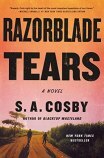 might be one of the most awarded books of the year. It is a violent story of revenge and retribution, where two men with criminal pasts, one black and one white, bond in an attempt to find out who murdered their two sons, who were married to each other. The book is high-energy and dark, a violent journey for the two ex-cons.
might be one of the most awarded books of the year. It is a violent story of revenge and retribution, where two men with criminal pasts, one black and one white, bond in an attempt to find out who murdered their two sons, who were married to each other. The book is high-energy and dark, a violent journey for the two ex-cons.
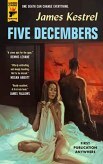 Five Decembers is best described as a police procedural, except that the solution to the murder occurs over a period of five years during World War II, encompassing the detective protagonist’s incarceration in Japan and a series of foreign excursions in search of suspects and evidence. The fact the book was published by Hard Case Crime will tell you all you need to know about its flavor. The tale is both historical and dark, a follower of the noir tradition with the disaffected detective and a cynical tone.
Five Decembers is best described as a police procedural, except that the solution to the murder occurs over a period of five years during World War II, encompassing the detective protagonist’s incarceration in Japan and a series of foreign excursions in search of suspects and evidence. The fact the book was published by Hard Case Crime will tell you all you need to know about its flavor. The tale is both historical and dark, a follower of the noir tradition with the disaffected detective and a cynical tone.
The plot of How Lucky, 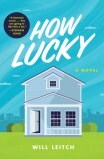 on the other hand, revolves around a young man with a wasting disease, confined to a wheel chair and unable to speak, who witnesses from his front porch one morning a young woman being kidnapped. His efforts to communicate with the police, to rescue the young woman, are delivered in his own sarcastic and, shall I say, smartass tone throughout. The crime is terrible, but the overall sense of the book is light.
on the other hand, revolves around a young man with a wasting disease, confined to a wheel chair and unable to speak, who witnesses from his front porch one morning a young woman being kidnapped. His efforts to communicate with the police, to rescue the young woman, are delivered in his own sarcastic and, shall I say, smartass tone throughout. The crime is terrible, but the overall sense of the book is light.
And lastly, Kat Rosenfield’s  No One Will Miss Her, is set in Maine. The daughter of a junkyard owner is murdered by her husband. Or is she? Or was she murdered by the wealthy female summer complaint who rented the daughter’s Airbnb? And maybe seduced her husband? Or did the summer complaint kill the husband? This is a shapeshifter of a novel, with many twists and turns and a surprising outcome.
No One Will Miss Her, is set in Maine. The daughter of a junkyard owner is murdered by her husband. Or is she? Or was she murdered by the wealthy female summer complaint who rented the daughter’s Airbnb? And maybe seduced her husband? Or did the summer complaint kill the husband? This is a shapeshifter of a novel, with many twists and turns and a surprising outcome.
In preparing the class, I hoped my students would see how different the nominee novels, these best of 2021, are. They are historical novels, contemporary novels, novels set in America, in Europe, in the Far East. They carry different tones: light, dark, emotional, just-the-facts. Their characters are healthy, disabled, sane and disturbed, white and Black, from our home state and from countries on the other side of the world.
We’ve just started the class, but already I’m seeing an opening of the minds and it’s heartening. A familiarity with the diversity of crime fiction can only mean more readers. And more readers means more books written and more and different kinds of books published. Which can only make the umbrella open wider.
Fatigue…And Not
John Clark with a split column today. Covid…Invective…Constant bombardment from everyone wanting your loyalty and your money. Welcome to 2022. I’ve been off social media for all but a very few instances for more than a year. I’ve survived the Covid imposed social isolation quite well, writing more than I have in ages. Even so, I have and doubt I’m alone, a sense of overarching fatigue to a point where I want a mental Calgon bath some days.

However, someone has to participate if we want to keep this clumsy beast known as democracy going. I don’t regret running for the legislature in 2018, but never again. There are many ways you and I can be part of what makes this country work. Whether you’re democrat, republican, libertarian, green, or independent, you can do something, and I don’t mean writing checks, although I encourage you to support your local candidates by going to the Maine Clean Election site and contributing to candidates who are running a publicly funded (no dark money, no big contributions) campaign. It made a huge difference when I ran in 2018. https://www.maine.gov/ethics/candidates/maine-clean-election-act/Qualifying-Contributions
This election cycle, I’m doing two things. I’m a delegate representing Waterville at the state democratic convention in May, and I’ve signed up to be a ballot clerk. I’m thrilled to say our younger daughter, Lisa will also be a delegate representing the town of Poland. Soooo, what are you doing to keep democracy running these days?

Lisa and Sam
Remember the ten story beginnings I used in my January post? I had every intention of turning several of them into short stories. I even had most of the one about disappearing blueberry rakers composed in my head. Well you know how things like that go. Instead, the one below jumped out and in short order told me it wasn’t no stinkin’ short story, it was a book, that since the first week of March has grown to 39,000 words and has quite an involved plot. That plot involves an alternate universe, a small surviving cluster of green humans who don’t wear clothing, a race of light avoiding aliens with no morals, and a lost weapon capable of wiping out the bad guy’s planet. I’m having great fun discovering what comes next as I write.
Who kicks their kid out during the worst blizzard in a decade, I wondered, but already knew the answer as I staggered along the edge of Route 27, leaning into a twenty-plus mile an hour wind spitting flesh-biting ice particles. My parents were religious zealots and I’d made the mistake of yawning during grace at the dinner table. It wasn’t my first sin, but in their eyes it was the straw that broke the camel’s back. So here I was staggering along, hastily thrown together backpack bumping with every step while getting closer to frostbite with each step.
I never heard the snowplow coming up behind me and I doubted the driver even knew I was there, but the impact of flying snow, coupled with the steel plow, shot me up and over the guardrail.
When I came to, I hurt too much to notice anything else. As the pain subsided a bit I realized how hot it was, and muttered the first thing that came to mind. “Well, Dorothy, I guess neither of us is in Kansas any more.”
Then a melodic voice responded, “Who’s Dorothy?”
March 25, 2022
Weekend Update: March 26-27, 2022
 Next week at Maine Crime Writers there will be posts by John Clark (Monday), Dick Cass (Tuesday), a group post (Thursday) and Kaitlyn Dunnett/Kathy Lynn Emerson (Friday).
Next week at Maine Crime Writers there will be posts by John Clark (Monday), Dick Cass (Tuesday), a group post (Thursday) and Kaitlyn Dunnett/Kathy Lynn Emerson (Friday).
In the news department, here’s what’s happening with some of us who blog regularly at Maine Crime Writers:
On April 5th at 8:00 p.m. Kate Flora will be moderating a panel with the 5 Edgars finalists for Best Novel. The link is below:

https://us02web.zoom.us/j/82142932824?pwd=RFZZMml0VStQUEV3ak5SWVRBaitxUT09 or https://bit.ly/MWANovel
In case it is still on sale, here’s a link to the kindle edition of A Good Man with a Dog:
An invitation to readers of this blog: Do you have news relating to Maine, Crime, or Writing? We’d love to hear from you. Just comment below to share.
And a reminder: If your library, school, or organization is looking for a speaker, we are often available to talk about the writing process, research, where we get our ideas, and other mysteries of the business. We also do programs on Zoom. Contact Kate Flora
March 24, 2022
The writing process: getting stuck on the detals
As we know, writers are frequently asked where they get their ideas. As we also know, and have discussed extensively on this blog, the answer is varied and endless. After years of being asked it, I have a fairly concise answer about overall themes, plots and characeters that seems to satisfy the askers.
Where I get stuck, though, is when I get asked about specific details. The questions about any of the thousands of tiny details that make up the fabric of a book. You’d think it’d be easy. It’s not that I don’t want to talk about the details of the book, and it’s gratifying people read the book and are curious about details. I love the fact they were paying attention and care.
I spent some time trying to figure out why I have so much trouble with these questons after a very enjoyable author talk this week about Bad News Travels Fast, the third book in my Bernadette “Bernie” O’Dea mystery series.
People were curious about very specific details. As I talked about why I chose the detail I did, I felt like I was describing a book that was put together out of stuff I just grabbed from other places. “I was reading a book by a Czech refugee, and his story struck me.” Or, “I was watching a TV show about blah blah blah and it struck me that’s the detail I needed in the book.”
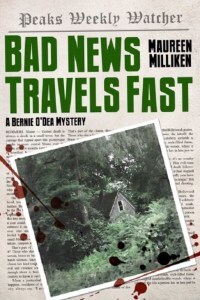 I was horrified that I sounded like I was just grabbing stuff from other places and plopping it in my books. Hopefully, that wasn’t the audience’s takeaway. It’s not that I don’t have a more accurate answer, it’s just that I’m not sure, for the sake of the person asking the question, it’s a better answer.
I was horrified that I sounded like I was just grabbing stuff from other places and plopping it in my books. Hopefully, that wasn’t the audience’s takeaway. It’s not that I don’t have a more accurate answer, it’s just that I’m not sure, for the sake of the person asking the question, it’s a better answer.
It’s not that I’m lying when I pinpoint where a detail came from, but very few details in my books are choices. Details ranging from character names to what someone’s eating is something I think about. It feels false to choose something randomly and then just toss it in. I’m not saying it’s a rule I have to not do that, I’m saying it’s how I feel. I frequently have to chew over a detail until I find something that works.
This may seem like a tangent, but it’s not. About 15 years ago, I was stopped at a red light right next to a little boy, about 10, holding a tray of cupcakes, that plastic see-through kind of package you get in the bakery section of the grocery store. He was crying. Not sobbing, just upset looking, with a tear on his cheek. He was Black, which I mention because it added to the poignancy. It made him seem more alone.
By the time I got to work, that moment had become a thing in my head. I didn’t build a story around it — who knows what was going on there? If life is decent at all, I’ve spent a lot more time thinking about it than he has. But I’d built a feeling around it. That’s not the only one of those I have, just one that comes to mind. I have dozens. Hundreds probably. Things strike me all the time. Every day.
They’re all part of a swirling, constantly moving dimension that’s been formed by all sorts of things, big and little. Details may come from some outside source, but they only feel right if get sucked into that dimension and come into focus.
Sure, yes, of course I have to sit down and work at writing, figuring out sentence structure and how the narrative will work and all that stuff. But surrounding it is that dimension. It’s not in my brain, not contained. It’s more like I’m in it than it’s in me.
This may make me sound unbalanced in more ways than one. “Geez, no wonder that book she’s been ‘writing’ for four years isn’t done yet.” You’re imagining me sitting there for hours typing “He was eating pizza.” No, wait, “He was eating a sub.” No wait, pizza is better. What kind of sub? Not roast beef. Maybe tuna? No, definitely pizza. No, wait…
That’s why I’m not sure how much I want readers to be let in how how the sausages are made in my factory.
I don’t want to dismiss questions from readers, particularly ones who have done me the great honor of reading one of my books. I try to answer questions honestly, but I also want to answer in a way that doesn’t get us both tangled up in the weeds. And that doesn’t have my loved ones planning some kind of intervention. So, as incomplete as it feels, I’ll probably stick with “Yeah, that was something I saw on TV and stole it for my book.”
Lea Wait's Blog
- Lea Wait's profile
- 509 followers



